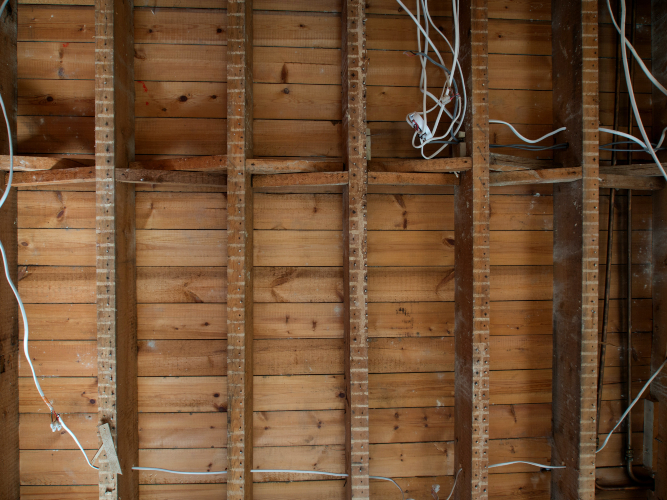When the wood in a building’s structure is damaged by pests, termites are often the first pest blamed. While these pests are known to chew their way through wood, they are not the only pest that can damage wood and other building materials. Carpenter ants can also severely damage lumber and do a number on a home’s interior and exterior. You may not naturally associate termites and carpenter ants together, but these pests have more in common that most may think.

Termites vs. Carpenter Ants: Physical Characteristics
Both pests are known for infesting homes and destroying wooden frames and structures. One way to identify if the da mage is caused by termites or carpenter ants is by the physical appearance of the pests present. If you manage to get a close enough look to detect certain defining physical characteristics, you may be able to tell whether the damage was caused by termites, or by carpenter ants.
Most worker termites are white- or light brown-bodied pests that grow between one-quarter and one-half of an inch long. They have elongated, oval-shaped bodies that contain horizontal ridges, and their two straight, short antennae sit atop their rounded head. Reproductive termites have two sets of symmetrical opaque wings which are twice as long as their body. These termites leave the colony and fly to find a mate and a suitable area for a new nesting site.
Carpenter ants, on the other hand, can grow between a quarter of an inch up to one full inch, and their reddish-brown bodies are segmented by their narrow waists. Their lengthy antennae are bent in the shape of an “L”, and the reproductive ants have asymmetrical wings that are proportionate to their large bodies. Though these pests strongly resemble black ants, carpenter ant colonies often have many sizes of ants working in the colony with some being almost 3x larger than other species of black ants. Not all carpenter ants are black but rather brown, red or a combination of colors, depending on the species.
Termites vs. Carpenter Ants: Damage
Physical characteristics are not the only things that differentiate these two pests. The type of damage they cause to wood can help you determine which pest is responsible.
Though both pests infest wood and other cellulose based materials, carpenter ants do not actually eat wood. Instead, these pests seek out softer, wet, or rotting wood in order to start building their nests. Once the nest is established they will tunnel into sound wood. The leftover wood then gets pushed out through the entrances to these tunnels, which can result in piles of wood shavings collecting near these entrances. Likewise, wood near the tunnels may appear to be chipped or scraped, though the insides of these tunnels often appear smooth and polished.
In contrast, termites do actually eat wood, and these pests are not picky; they will eat both healthy and weakened, rotting wood, if necessary. Because termites typically travel through the ground to reach their new wood habitat, they bring with them a mixture of mud and soil that they track into the tunnels. Homeowners with subterranean termite damage may begin to see long mud tubes running from the ground to the termites’ tunnel entrances. Likewise, as these pests eat, they excrete dark pellets that are pushed out of the tunnel openings an d often collect on nearby surfaces. If the termite damage is being inflicted within a home’s interior or wooden furniture, the wood may begin to blister, peel, or grow discolored spots across the surf ace, but most often the wood shows no evidence of termite infestation at its surface.
However, these pests do have some similarities when it comes to their tunneling behavior. Both reproductive ants and termites leave their colony and can appear in droves as they swarm to find mates and new nesting sites. This only happens when conditions are correct, and while it is often occurs during the spring or early summer, it can also occur at other times of the year as well. Once a new colony is established, these pests will chow down on the available wood 24/7. Though both pests work exhaustively, it can sometimes take years for damage caused by these pests to become noticeable.
While both pests have strong jaws that allow them to chew through solid wood fibers, neither carpenter ants nor termites are known to bite humans or transmit dangerous diseases. But both pests are capable of inflicting long-term destruction on homes and other structures. In fact, the National Pest Management Association estimates that over $5 billion in property damages is caused by termites alone each year.
Whether your home is being damaged by carpenter ants or termites, it’s important to get professional inspection to be able to catch them before significant damage has occurred. Since 1927, Terminix has been helping protect homes across the country from destructive termite damage. To get more information about termite or carpenter ant control, contact your local Terminix branch.




